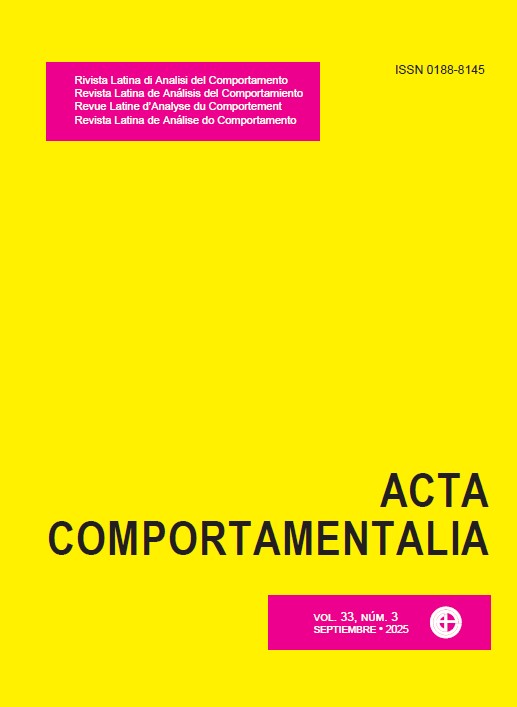Resurgence of Variability as a Function of Decreasing Reinforcement Magnitude
DOI:
https://doi.org/10.32870/ac.v33i3.88681Keywords:
behavioral resurgence, reinforcement magnitude, behavioral variability, thinning, operant dimension of behaviorAbstract
Behavioral resurgence refers to the reoccurrence of a previously reinforced target behavior (R1), which was later extinguished, when a current response (R2) is thinned in some way. Thinning, in this sense, refers to an environmental manipulation that decreases the frequency of the behavior, functioning similarly to extinction. A study was conducted to investigate whether the resurgence of behavioral variability dimension occurs in the same way as the frequency of behavior, given the scarcity and inconclusiveness of data from studies on variability resurgence. Previous studies point to two potential problems: (1) the use of extinction as a test, which does not allow for isolating the effect of resurgence from the behavioral history as compared to the effect of variability induced by extinction, and (2) the analysis based solely on the U-value measure, which does not provide information about the variability pattern. To address these problems, parametric thinning of reinforcement magnitude was implemented, and new measures were used to indicate response patterns, such as recurrence time and random number generator. A within-subject design was applied, with three experimental phases and order balancing in Phase 3. In Phase 1, participants were exposed to a Lag 10 Variation contingency, with a reinforcement magnitude of five points. In Phase 2, they were exposed to a Lag 3 Repetition contingency, with a reinforcement magnitude of 10 points. In Phase 3, the same contingency from the previous phase was maintained, but parametric thinning of the reinforcement magnitude was carried out, manipulating the magnitude of points every 30 trials. Additionally, participants were divided into two groups, differing in the order in which the points were presented, either increasing or decreasing. Resurgence occurred both in the level and pattern of variability, but it depended on the order of exposure. It is discussed that the resurgence of variability results from the reinforcement history, not just from extinction-induced effects. Furthermore, it is suggested that any form of thinning of R2 may be sufficient to cause the resurgence of R1, which has significant implications for understanding behavioral resurgence and variability as an operant dimension of behavior.
Downloads
Downloads
Published
How to Cite
Issue
Section
License

<a rel="license" href="http://creativecommons.org/licenses/by-nc-sa/4.0/"><img alt="Licencia de Creative Commons" style="border-width:0" src="https://i.creativecommons.org/l/by-nc-sa/4.0/88x31.png" /></a><br />Este obra está bajo una <a rel="license" href="http://creativecommons.org/licenses/by-nc-sa/4.0/">licencia de Creative Commons Reconocimiento-NoComercial-CompartirIgual 4.0 Internacional</a>.






